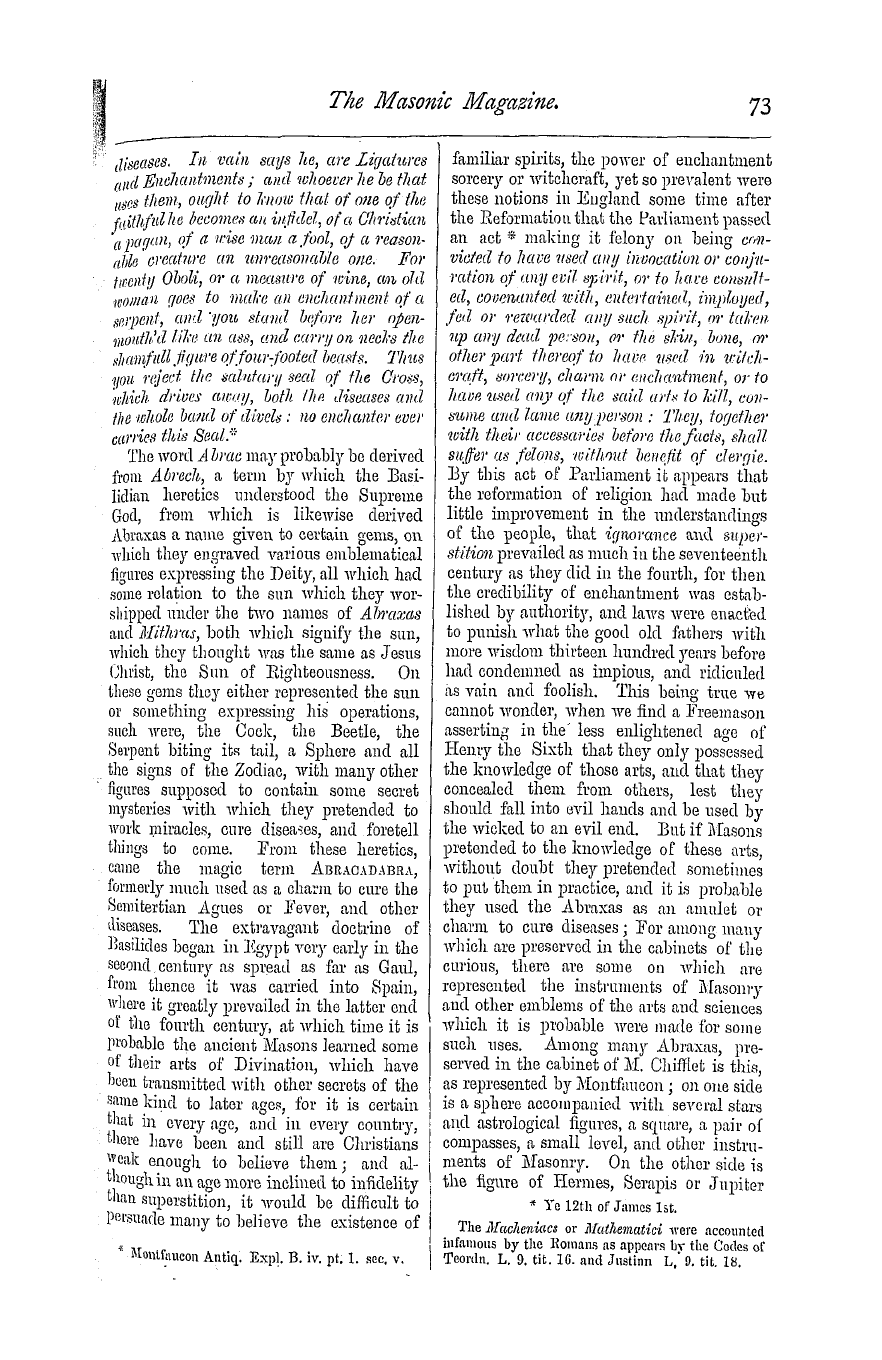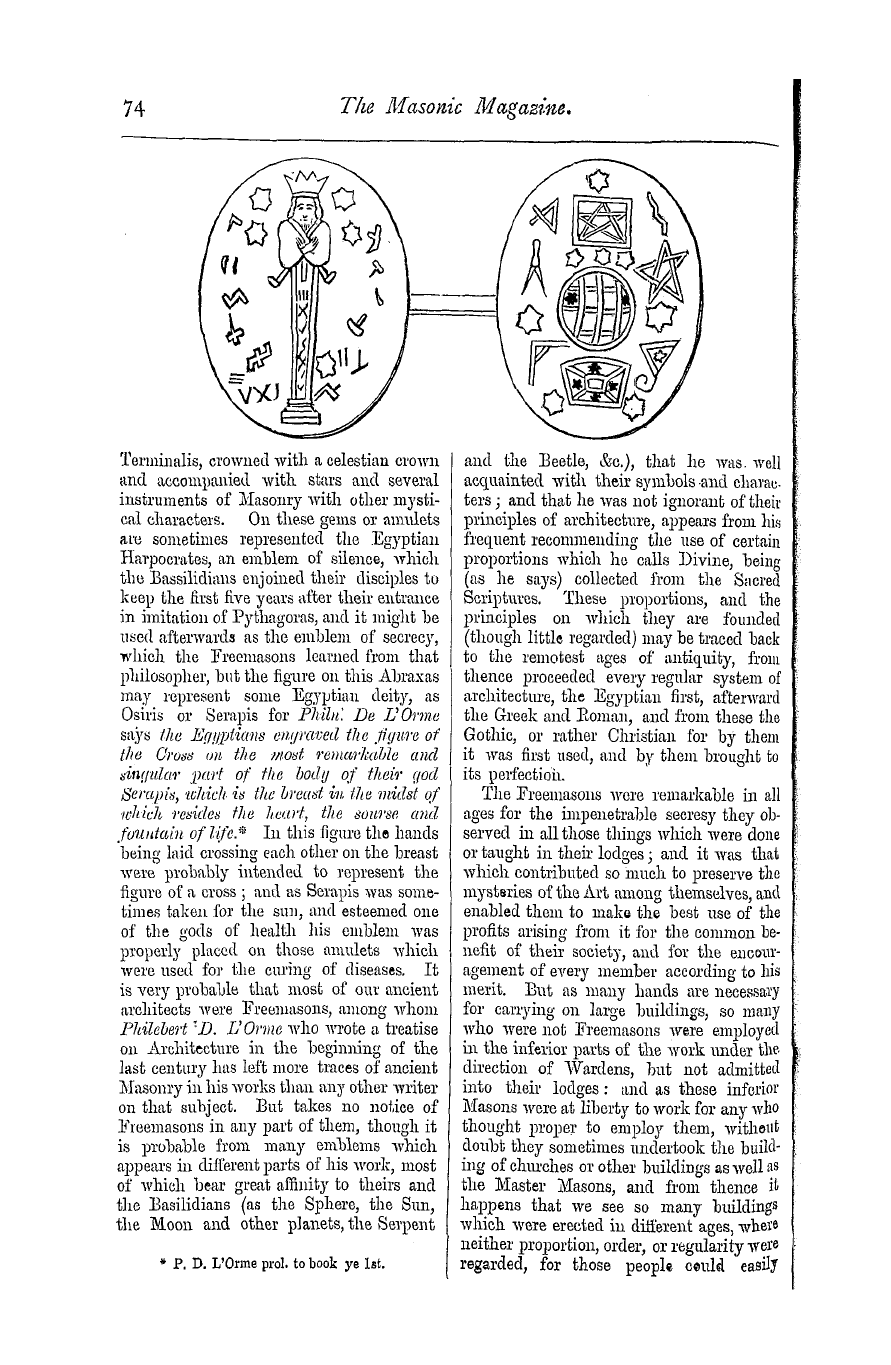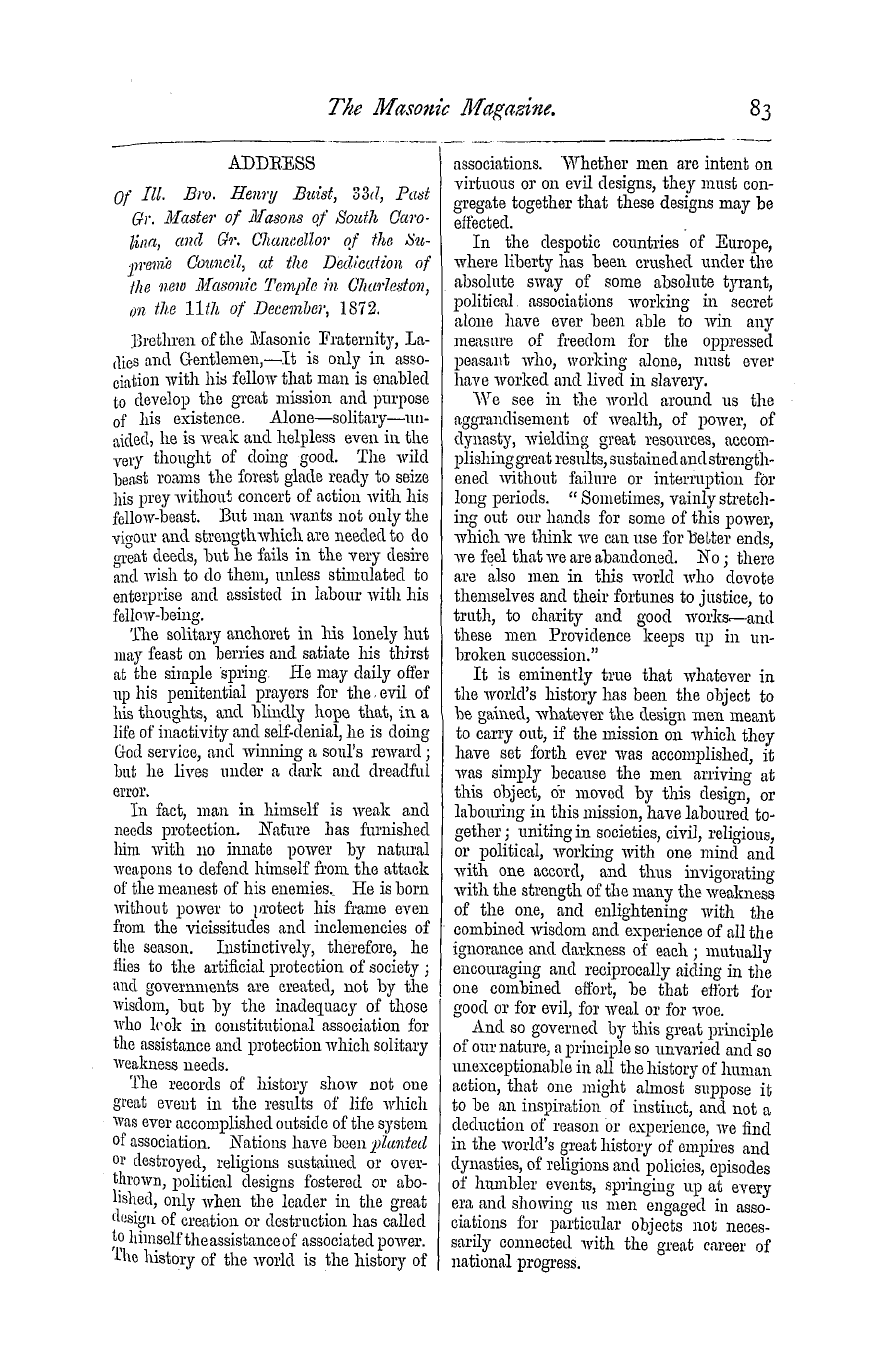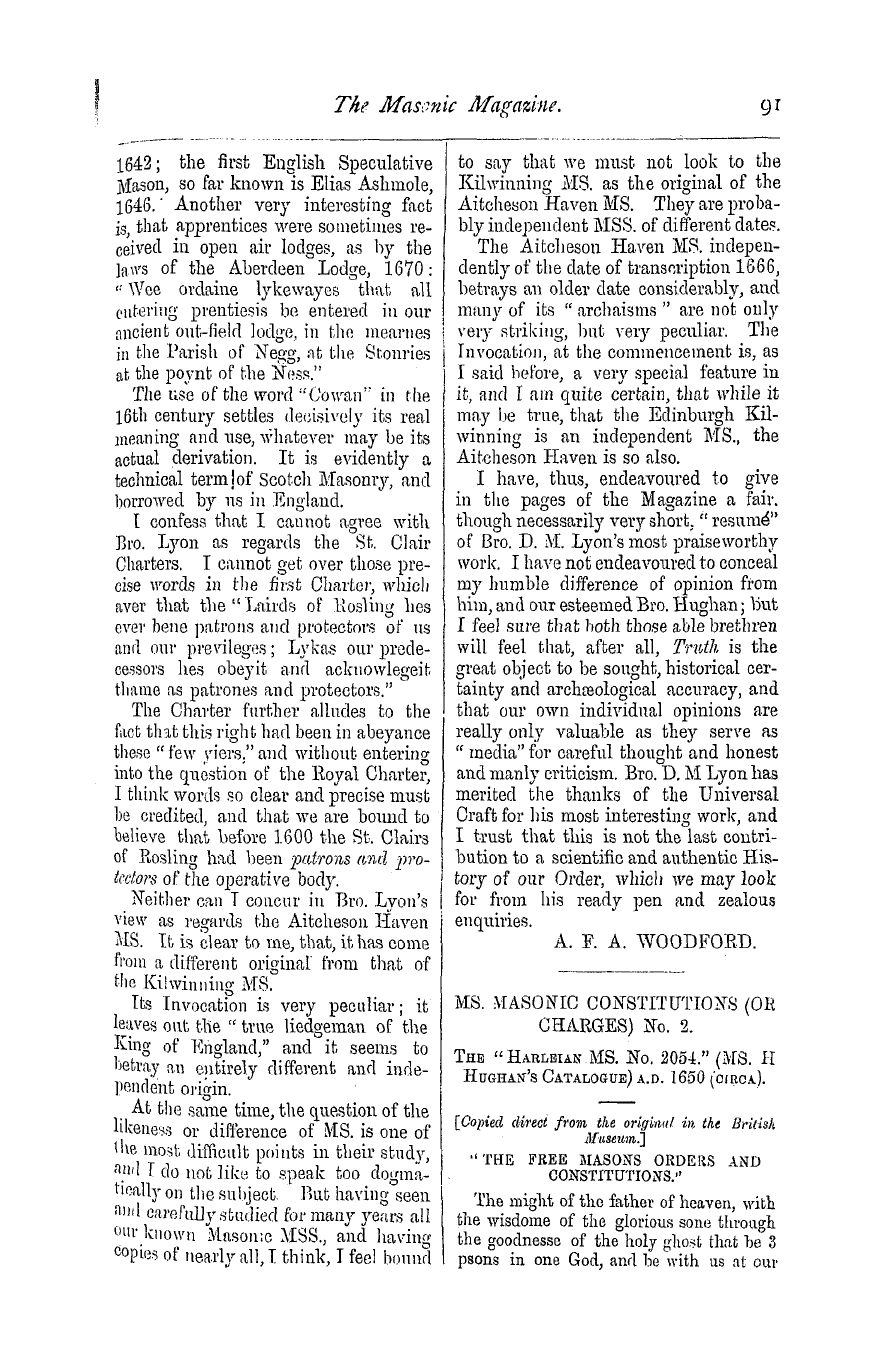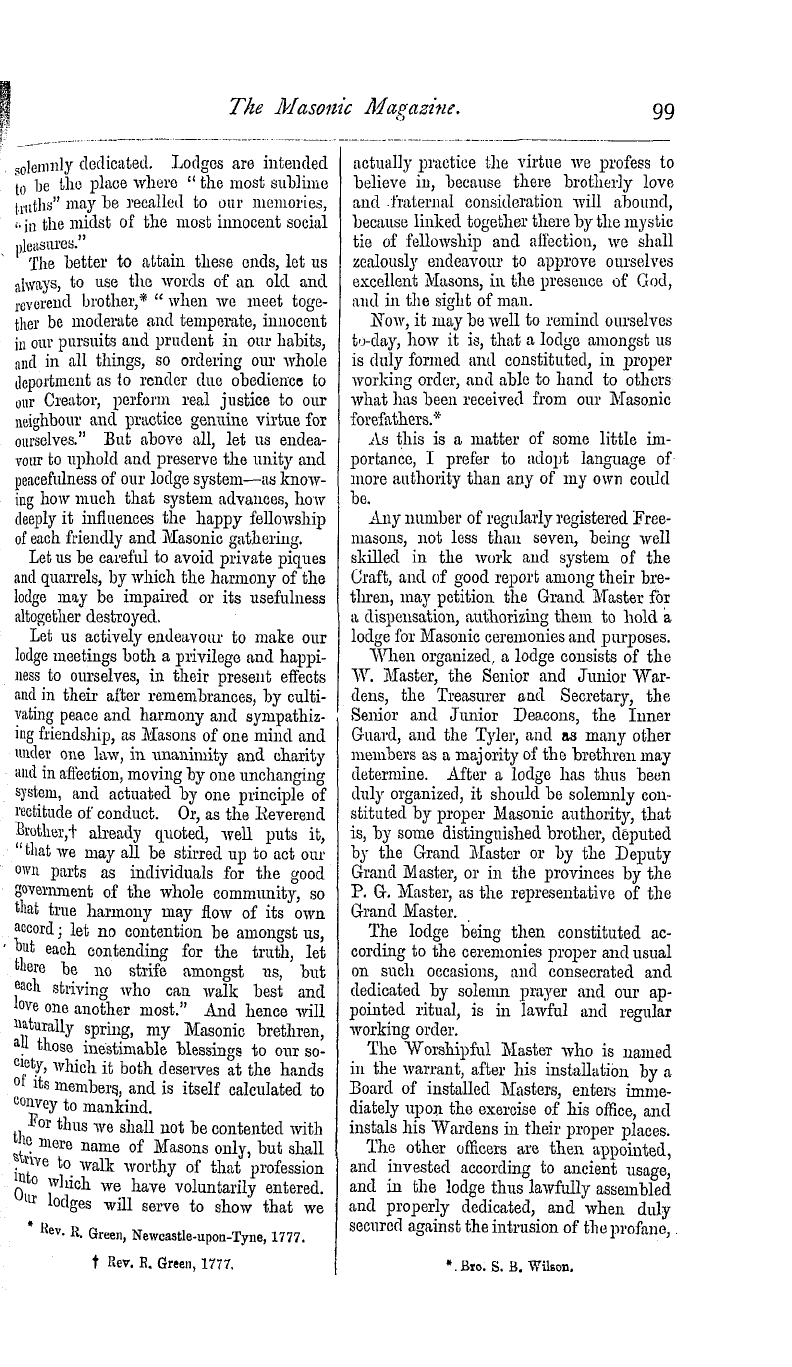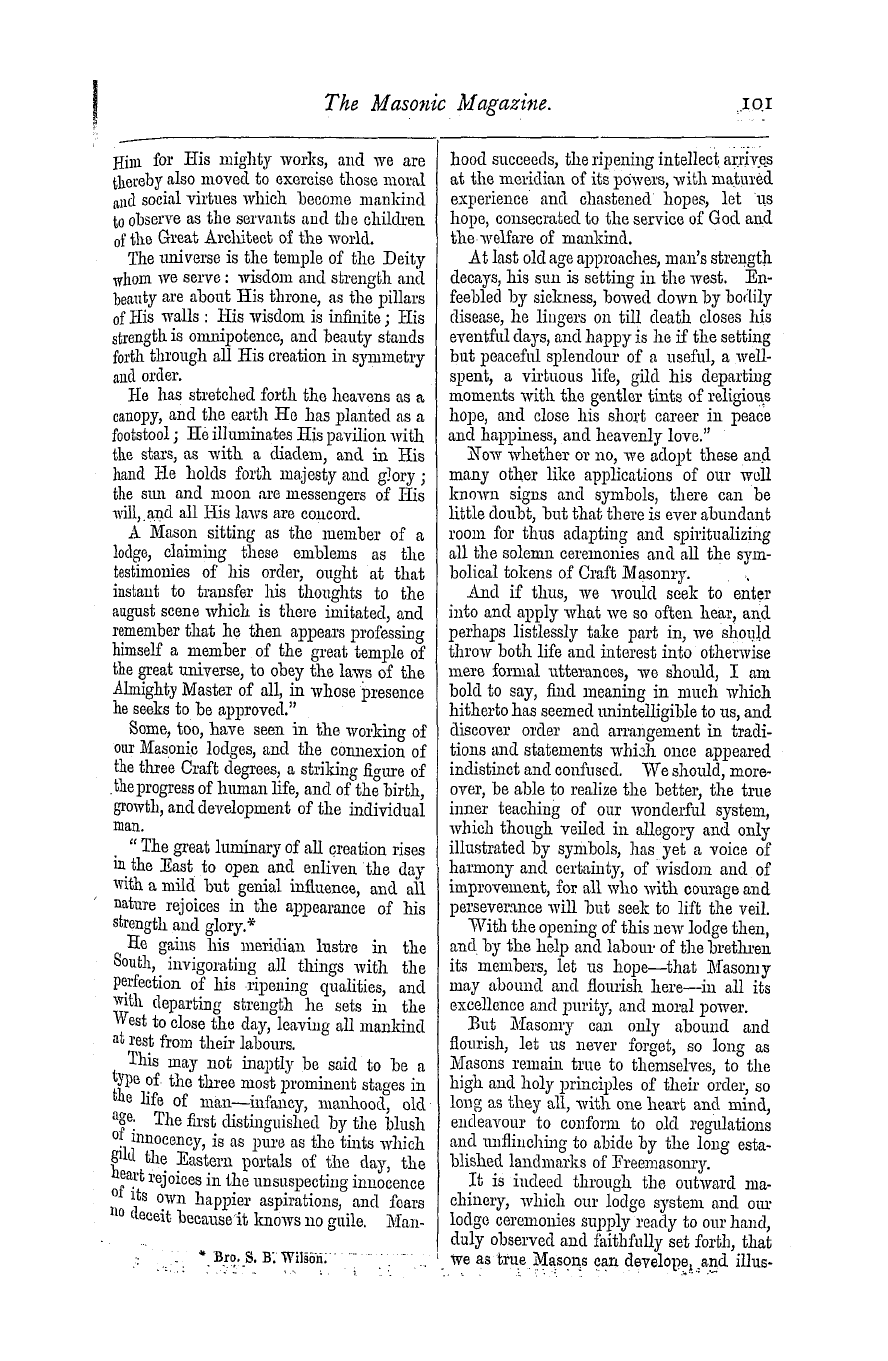Note: This text has been automatically extracted via Optical Character Recognition (OCR) software.
Observations On The Antiquity Of Masons And Masonry In England.
making the art of Masonry appear more extraordinary , it must be acknowledged that they brought that art to a very surprising degree of perfection , and gothic architecture to a more rational system , than the Grecian or Roman has been by the modern architects . They invented and
brought to perfection the most useful secret of Masonry , called the traite , * by AA'hich they were able to execute , with facility , AA'hatever their genius could invent ; and the theory of vaulting depending thereon , AA'as never so Avell understood by the
ancient or modern architects , as by those Avho are unjustly despised for their Avant of skill , and derided as Goths for Avant of taste . But if Grecian architecture is founded on principle by AA'hich Ave should examine the Avorks of ancient modern
artists , so Gothic architecture has certain rules by AA'hich if Ave examine the Avorks of Gothic architects Ave shall find they Avere equal to the moderns in taste for designing , and superior to them in abilities to execute , but like them they best understood that
style AA'hich fashion has established in the age and country AA'here they lived ; for AA'hen Grecian architecture AA-as introduced among them in the sixteenth century , they complied Avith the fashion and adopted its ornaments , but executed them in the same petit manner as the artists in this for
age , mistaking the efi ' eot Avhich distance produces , they AA'ere often obliged to paint them of A'arious colours , Avithout AA'hich they coidd not bo seen , though they had bestOAA'ed much time and labour in producing them ; many examples of this petit
style of architecture are remaining anion" - the buildings and monuments erected betAveen the reigns of Henry the Seventh and James the First , most of AA'hich are laced in the modern fashion AA'ith Grecian ornaments , as they are UOAV called . But the
merits of ancient Freemasons AA'ere not confined to tho ornaments of building . They AA'ere perfect in the knoAvledge of proportions and kneAV IIOAV to vary them AA'hen they Avanted to produce a striking effect . In the execution of their AA'orks they kneAV hoiv to please by tho proportions , the
neatness , or the delicacy of the workmanshi p , and how to surprise by the artful contrivance of it ; and to this must be attributed tho existence of many magnificent fabrics , which have stood several ages Avithout the assistance of iron or timber , though they AA'ere at first so artfully contrived , that it is difficult to comprehend IIOAV they could stand at all . In short , if AA ' consider the contrivance and execution of their
designs , Ave must aeknoAvledge their superior skill ; and if Ave consider the greatness of them , Ave must alloAv they had a taste for designing AA'ell adopted to the religion and genius of the age they liA'ed in . That the theory of vaults Avas as little understood by the Greek and Roman
architects as by the modern , appears from the Avorks AA'hich they have left behind them ; and although many fine churches AA'ere built in A'arious parts of the Avorld after the reign of Constantino , Ave do not find any great progress AA'as made in the art before
the tAvelfth century , for the Roman manner AA'as generally used in all places , particularly in England , until the reign of Henry tlie Second , AA'hen William Sononensis introduced the neAV manner of vaulting AA'hen he repaired and enlarged the choir of
Canterbury Cathedral , AA'hich had been destroyed by a fire in the year 1174 , and although the art was then in its infancy , Ave may from thence trace the first step
that AA'as taken to bring it to the perfection it acquired in after ages . The progress that AA'as made in Masonry from that time to the end of Henry the Third ' s reign may be traced in various elegant structures AA'hich AA'ere erected in those times , in a style peculiar to that ago ( particularly the
church of Salisbury and several others ) , and by further improvements AA'hich AA'ere made by the industry of the Freemasons another style AA'as produced from it , AA'hich was perfected in the time of Edward tho Third , though the theory of Masonry Avas
neA'er so Avell understood as it AA'as from the time of Edward the Third to the reign of Henry the Eighth ; after Avhich time it began to decline , AA'hen the zeal for building churches AA'as extinguished at the Reformationand upAvards of six hundred
, conventual churches ( many of AA'hich Avore built in a magnificent manner as appears by their ruins ) , Avere either wholly destroyed or so miserably defaced by those blind enthusiasts , that Ave have hardly a perfect
Note: This text has been automatically extracted via Optical Character Recognition (OCR) software.
Observations On The Antiquity Of Masons And Masonry In England.
making the art of Masonry appear more extraordinary , it must be acknowledged that they brought that art to a very surprising degree of perfection , and gothic architecture to a more rational system , than the Grecian or Roman has been by the modern architects . They invented and
brought to perfection the most useful secret of Masonry , called the traite , * by AA'hich they were able to execute , with facility , AA'hatever their genius could invent ; and the theory of vaulting depending thereon , AA'as never so Avell understood by the
ancient or modern architects , as by those Avho are unjustly despised for their Avant of skill , and derided as Goths for Avant of taste . But if Grecian architecture is founded on principle by AA'hich Ave should examine the Avorks of ancient modern
artists , so Gothic architecture has certain rules by AA'hich if Ave examine the Avorks of Gothic architects Ave shall find they Avere equal to the moderns in taste for designing , and superior to them in abilities to execute , but like them they best understood that
style AA'hich fashion has established in the age and country AA'here they lived ; for AA'hen Grecian architecture AA-as introduced among them in the sixteenth century , they complied Avith the fashion and adopted its ornaments , but executed them in the same petit manner as the artists in this for
age , mistaking the efi ' eot Avhich distance produces , they AA'ere often obliged to paint them of A'arious colours , Avithout AA'hich they coidd not bo seen , though they had bestOAA'ed much time and labour in producing them ; many examples of this petit
style of architecture are remaining anion" - the buildings and monuments erected betAveen the reigns of Henry the Seventh and James the First , most of AA'hich are laced in the modern fashion AA'ith Grecian ornaments , as they are UOAV called . But the
merits of ancient Freemasons AA'ere not confined to tho ornaments of building . They AA'ere perfect in the knoAvledge of proportions and kneAV IIOAV to vary them AA'hen they Avanted to produce a striking effect . In the execution of their AA'orks they kneAV hoiv to please by tho proportions , the
neatness , or the delicacy of the workmanshi p , and how to surprise by the artful contrivance of it ; and to this must be attributed tho existence of many magnificent fabrics , which have stood several ages Avithout the assistance of iron or timber , though they AA'ere at first so artfully contrived , that it is difficult to comprehend IIOAV they could stand at all . In short , if AA ' consider the contrivance and execution of their
designs , Ave must aeknoAvledge their superior skill ; and if Ave consider the greatness of them , Ave must alloAv they had a taste for designing AA'ell adopted to the religion and genius of the age they liA'ed in . That the theory of vaults Avas as little understood by the Greek and Roman
architects as by the modern , appears from the Avorks AA'hich they have left behind them ; and although many fine churches AA'ere built in A'arious parts of the Avorld after the reign of Constantino , Ave do not find any great progress AA'as made in the art before
the tAvelfth century , for the Roman manner AA'as generally used in all places , particularly in England , until the reign of Henry tlie Second , AA'hen William Sononensis introduced the neAV manner of vaulting AA'hen he repaired and enlarged the choir of
Canterbury Cathedral , AA'hich had been destroyed by a fire in the year 1174 , and although the art was then in its infancy , Ave may from thence trace the first step
that AA'as taken to bring it to the perfection it acquired in after ages . The progress that AA'as made in Masonry from that time to the end of Henry the Third ' s reign may be traced in various elegant structures AA'hich AA'ere erected in those times , in a style peculiar to that ago ( particularly the
church of Salisbury and several others ) , and by further improvements AA'hich AA'ere made by the industry of the Freemasons another style AA'as produced from it , AA'hich was perfected in the time of Edward tho Third , though the theory of Masonry Avas
neA'er so Avell understood as it AA'as from the time of Edward the Third to the reign of Henry the Eighth ; after Avhich time it began to decline , AA'hen the zeal for building churches AA'as extinguished at the Reformationand upAvards of six hundred
, conventual churches ( many of AA'hich Avore built in a magnificent manner as appears by their ruins ) , Avere either wholly destroyed or so miserably defaced by those blind enthusiasts , that Ave have hardly a perfect




